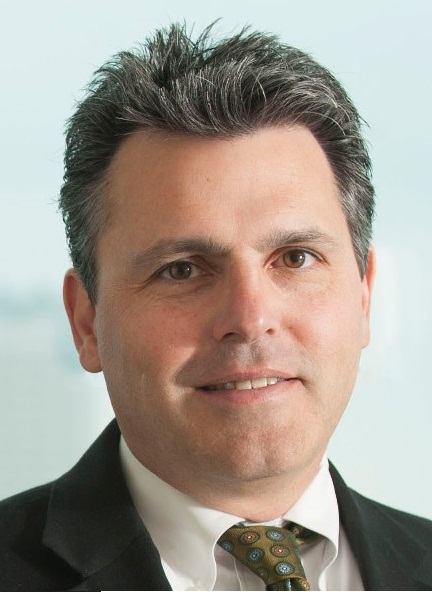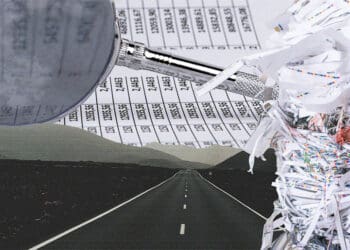Part two of the series focused on specific events that occurred during the 1970s. On June 21, 1970, the Pennsylvania Central Transportation Company collapsed; the U.S. Congress responded by passing the Regional Rail Reorganization Act of 1973. In 1974, the failure of the Franklin National Bank resulted in the first Federal rescue of an individual institution deemed “too big to fail.” The Watergate scandal was not only about transgressions of the Nixon administration, but it also led to the discovery of U.S. company executives at major corporations making millions in questionable offshore payments or outright bribes to obtain contracts from foreign governments. The U.S. government’s response was the adoption of the Foreign Corrupt Practices Act, passed in 1977.
As referenced in the Outline of the U.S. Economy by Conte and Carr in 2001, the 80s began with an economy in a recession, bankruptcies up by 50 percent, a declining agriculture industry and high interest rates. Nevertheless, by 1983 inflation had eased, the financial pains began to lessen and the U.S. began a sustained period of economic growth. However, the renewed economic growth was not lacking schemers that wanted a shortcut or a hedge to the “Lifestyles of the Rich and Famous”1, thereby solidifying their legacy in the “Lifestyles of the Rich and Infamous.”2
In fact, from a financial perspective, as portrayed in the movie “Wall Street,” the 1980s are often referred to as a decade of unrestrained financial greed and lawlessness. This could not be more clearly portrayed than by the transgressions that occurred in the 1980s by a leading Wall Street trader and arbitrageur, Ivan Boesky; the investment banking firm, Drexel Burnham Lambert; a consumer electronic chain, Crazy Eddie; and the failure of an entire financial segment of the economy.
In 1975, using $700,000 from his father-in-law, Ivan Boesky launched his own arbitrage fund and by the early 80s he was the most famous arbitrageur in the U.S.3 He purchased stocks of companies just before they were to be sold. After the deal was made and the information became public, the stock prices would soar and he would sell the stock and realize huge profits. These transactions are legal just so long as all the information used to gain insights of pending company sales is available to the general public.
However, Boesky wanted an advantage sufficient enough to hedge his investments from losses. He cheated by receiving inside information from the deal makers that were putting the transactions together and he directed a portion of the profits back to those deal makers. Ivan was so audacious that in an interview with the Chicago Tribune he proclaimed “Greed is all right, by the way. I want you to know that I think greed is intelligence healthy. You can be greedy and still feel good about yourself.”4
One man known to have abundant information about pending large company buy/sell transactions was Michael Milken. He worked at the investment banking firm Drexel Burnham Lambert (“Drexel Burnham”) and was known on Wall Street as the “junk bond king.”5 Michael Milken and Drexel Burnham pioneered the widespread use of junk bonds to raise capital in order to finance the leveraged buyouts of underperforming companies.
Acting on inside information from Milken and his colleague, Dennis Levine, Boesky raised hundreds of millions of dollars in debt equity through Drexel Burnham to place arbitrage trades on the deals put together by Drexel Burnham. Boesky profited handsomely from the advanced knowledge by taking advantage of the takeover bids and the manipulation of the stocks to his benefit. In the late 80s, federal investigators discovered the scheme and all three men were convicted of a number of felonies, including racketeering and fraud.
Although the Securities and Exchange Acts of 1933 and 1934 made it illegal to benefit from the sale or purchase of securities in connection with inside information, the passing of the 1984 Insider Trading Sanction Act and the Insider Trading and Securities Enforcement Act of 1988 further expanded statutes to act as future deterrents by increasing penalties and fines and also by making the recipient of the inside information to be as guilty as the person passing the information.
One of the 80s’ most memorable and infamous bad actors was Eddie Antar, owner of Crazy Eddie, a consumer electronics store located in the northeast. Eddie, along with father, Sam Antar, started with a single store in Brooklyn, New York in the early 70s and expanded operations into 43 locations in four states.6 The store became infamous with its screaming television ads declaring the lowest prices on TVs, stereos, VCRs and other home electronics. The sales people were notorious for using bait and switch techniques to rip off customers. By the early 80s, Eddie and his family set their sights on higher profile victims by taking the electronics chain public in 1984.
It did not take very long for the company to quickly unravel. It was discovered that the family was skimming cash, inflating the stock price by fabricating sales records and presenting the appearance that the company was soaring. The false financial statements helped propel company stock from $8 to $79 per share.7 The company was sold in 1987, but not before Eddie had already cashed out his share of Crazy Eddie stock, worth between $25 million and $30 million. Members of the family were charged with a series of financial crimes and about $150 million was recovered from Eddie and his relatives.8
However, the largest financial failure of the decade that had a profound effect on the taxpayers and the economy was the savings and loans (“S&L”) and banking crisis. This was the most serious financial catastrophe since the 1930s. The stage had been set in the backdrop of the 80s that began with high inflation and high interest rates. Due to the technical financial innovations in the 70s that included rapid improvements in telecommunications and data processing, profitability decreased for traditional banking lines of business. Additionally, innovations produced new financial instruments that widened the scope for risk taking.
New markets in financial futures, junk bonds, swaps and other instruments made it easy for banks to take on extra risks.9 Legislation passed in 1980 and 1982 that gave expanded powers to the S&L and mutual savings banks to engage in the new risky financial instruments. Also, legislation increased federal deposit insurance by 150 percent, taking it from $40,000 per account to $100,000. “Between 1980 and 1991 …1,500 commercial and savings banks…and 1,200 savings and loan associations…failed and were resolved by the regulatory agencies.”10 By the time the government bailout of the financial institutions concluded, it cost the tax payers about $150 billion.11
One of the fundamental keys to understanding the S&L crisis is the relationship between the voter/taxpayers (“Principals”) and the regulators and politicians (“Agents”).12 Regulators and politicians are ultimately agents for the principals, because in the final analysis, it is ultimately the principals that bear the cost of any losses incurred by the deposit insurance agencies that protect their deposits. The problem arises when representatives of the agents, such as banking and loan managers, have financial incentives that differ from those of their employer, the principals. In other words, these agent representatives often act illegally in their own self-interest rather than in the interest of the principals.
The representatives of the agents got away with this behavior for several reasons, including:
- Many S&L managers did not have sufficient expertise to manage and/or understand the risks associated with the new financial instruments.
- The new expanded powers of the financial institutions led to unbridled growth in the new financial instruments that further increased the risks.
- The regulators had neither the expertise nor the adequate resources to effectively monitor the new activities.13
One scandal that illustrates a prime example of the principal agent problem occurred in 1984 and involved Charles Keating and Lincoln Savings and Loan of Irvine. Charles Keating owned a construction firm called American Continental, which was one of the largest land developers in Arizona. His firm planned to build a huge real estate development in Phoenix. In 1984, Keating acquired American Continental, even though just five years before, the SEC accused him of fraud. The purchase of Lincoln Savings and Loan was a “gold mine”14 for Keating.
He fired Lincoln’s more conservative management and internal auditors and directed Lincoln to make high-risk speculative investments including purchasing substantial tracts of desert land in Arizona.15
Due to a shortage of savings and loan examiners, Lincoln was able to escape any serious examination until the late 80s. Eventually, examiners from the Federal Home Loan Bank of San Francisco discovered that Lincoln had exceeded the limit on equity investments by $600 million and they recommended federal seizure of the institution and all of its assets.16
Keating spent millions and hired more than 50 law firms to defend his actions and to fight the regulators. It was also alleged that Keating had influenced five high-ranking U.S. Senators to meet with the chairman of the Federal Home Loan Board and four top regulators to sway their opinions to Keating’s favor.17 Soon after Danny Wall became the new Chairman of the Federal Home Loan Board, the investigation moved from San Francisco to Washington and mysteriously no examiners appeared to work on the case for almost a year. However, Lincoln finally failed in 1989 and it cost the federal government over $3 billion and about left 23,000 customers with worthless bonds.18 Keating was ultimately convicted of wire fraud and bankruptcy fraud and served four and a half years in prison.
In the aftermath of the S&L crisis, the Financial Institutions Reform Recovery and Enforcement Act (FIRREA) of 1989 and the Federal Deposit Insurance Corporation Improvement Act (FDICIA) of 1991 were signed into law. The aforementioned legislation was revered as the most significant legislation to affect the financial institutions since the 1930s. In the end, additional agencies were created, responsibilities were shifted around, new restrictions were put in place, the S&L and banking industries were reregulated, prompt corrective actions for intervening when financial problems arose were simplified and more financial studies were authorized. Yet the new reforms seemed to be just new minor hurdles that were unable to prevent another ensuing decade of even greater financial catastrophes.
The same underlying morality issues regarding right and wrong concerning financial crimes that plagued the 70s and resulting legislation did little to stem the tide of the financial crimes of the 80s. The term “morale hazard” seemed to resonate in regard to the relationship of insured depositors, regulators, politicians and financiers. Morale hazard occurs in financial markets when one person takes more risks because someone else bears the burden of those risks. Part four of the series will focus on the financial crimes of the 90s and yet another decade of financial reforms and corporate governance as it relates to the legal, regulatory, institutional and ethical environment of the corporate community.
Footnotes
1 (n.d.). Retrieved April 21, 2015, from http://en.wikipedia.org/wiki/Lifestyles_of_the_Rich_and_Famous
2 (n.d.). Retrieved April 21, 2015, from http://www.discogs.com/Ice-T-Lifestyles-Of-The-Rich-And-Infamous-The-Tower/release/477202
3 (n.d.). Retrieved April 21, 2015, from http://www.businessinsider.com/meet-ivan-boesky-the-infamous-wall-streeter-who-inspired-gordon-gecko-2012-7
4 (n.d.). Retrieved April 21, 2015, from http://www.businessinsider.com/meet-ivan-boesky-the-infamous-wall-streeter-who-inspired-gordon-gecko-2012-7#in-may-of-1986-he-delivered-remarks-about-greed-being-healthy-12
5 (n.d.). Retrieved April 21, 2015, from http://www.biography.com/people/michael-milken-234612
6 (n.d.). Retrieved April 21, 2015, from http://www.whitecollarfraud.com/946562.html
7 (n.d.). Retrieved April 21, 2015, from http://www.nj.com/news/index.ssf/2012/03/the_long_and_wild_crazy_eddie.html
8 (n.d.). Retrieved April 21, 2015, from http://www.nj.com/news/index.ssf/2012/03/the_long_and_wild_crazy_eddie.html
9 (n.d.). Retrieved April 21, 2015, from http://wps.aw.com/wps/media/objects/7529/7710164/appendixes/ch11apx1.pdf
10 (n.d.). Retrieved April 21, 2015, from http://fee.org/freeman/detail/the-us-banking-debacle-of-the-1980s-a-lesson-in-government-mismanagement
11 (n.d.). Retrieved April 21, 2015, from http://wps.aw.com/wps/media/objects/7529/7710164/appendixes/ch11apx1.pdf
12 (n.d.). Retrieved April 21, 2015, from http://wps.aw.com/wps/media/objects/7529/7710164/appendixes/ch11apx1.pdf
13 (n.d.). Retrieved April 21, 2015, from http://wps.aw.com/wps/media/objects/7529/7710164/appendixes/ch11apx1.pdf
14 (n.d.). Retrieved April 21, 2015, from http://wps.aw.com/wps/media/objects/7529/7710164/appendixes/ch11apx1.pdf
15 (n.d.). Retrieved April 21, 2015, from http://wps.aw.com/wps/media/objects/7529/7710164/appendixes/ch11apx1.pdf
16 (n.d.). Retrieved April 21, 2015, from http://wps.aw.com/wps/media/objects/7529/7710164/appendixes/ch11apx1.pdf
17 (n.d.). Retrieved April 21, 2015, from http://www.truth-out.org/opinion/item/22856-charles-keating-and-the-lessons-of-the-sl-crisis
18 (n.d.). Retrieved April 21, 2015, from http://en.wikipedia.org/wiki/Charles_Keating















